This post may contain references or links to products from one or more partners of our parent company and/or subsidiaries of our parent company. For more information, visit this page.
Updated Dec 28, 2022
We know, we know. Choosing a new floor is kinda the worst. There are about a million types of flooring (and it’s hard to tell the difference between, like, 90% of them). It’s expensive. It’s time-consuming. It’s confusing. We get it.
But here’s the thing: we’re here to help. We’re here to make your flooring options understandable. We’re here to make flooring—dare we say it—fun? Here’s the flooring 101.
But before we begin, here are the top rated brands by flooring type.
- Luxury Vinyl Plank – Proximity Mills or Doma
- Outdoor Turf – Cali Bamboo
- Carpet – Proximity Mills or Newton
- Laminate – Newton
- Engineered and Solid Hardwood – Doma or Paradiso
- Tile – Paradiso
- Decking – TimberTech
Below, we’ll break down everything you need to know about all the most popular types of flooring: solid hardwood, engineered hardwood, wood laminate, vinyl plank, LVT, vinyl sheet, ceramic tile, stone tile, carpet tiles—even niche products like bamboo flooring, cork flooring, and wood-look tile.
We’ll examine each flooring option’s construction, installation methods, advantages, disadvantages, best uses, and cost. And when you’re ready to find a local flooring retailer, we’ll even help you with that too.
We’re going to help you find the best flooring for you. Don’t fret. It’s going to be ok.
How to Use This Guide
To make this guide as easy as possible to understand, we’ve separated it into 4 overall sections: Hardwood, Resilient, Tile, and Soft Surface.
Each section will contain info on multiple types of flooring. And if you ever feel like you’re having trouble keeping track, simply click on the table of contents above for some help!
Types of Flooring Part 1: Hardwood
Let’s start with the classics! There are two main types of wood flooring: solid hardwood and engineered hardwood. Each option comes with its own set of pros and cons, and each comes at a different price point.
The important thing to remember here: neither one is any better or worse than the other—they just have different uses!
Solid (Natural) Hardwood Flooring
There’s a reason solid hardwood flooring is so beloved—it’s gorgeous, it’s durable, it’s warm, and it’s elegant. Plus, if you treat it right, it can last for (literally) centuries.
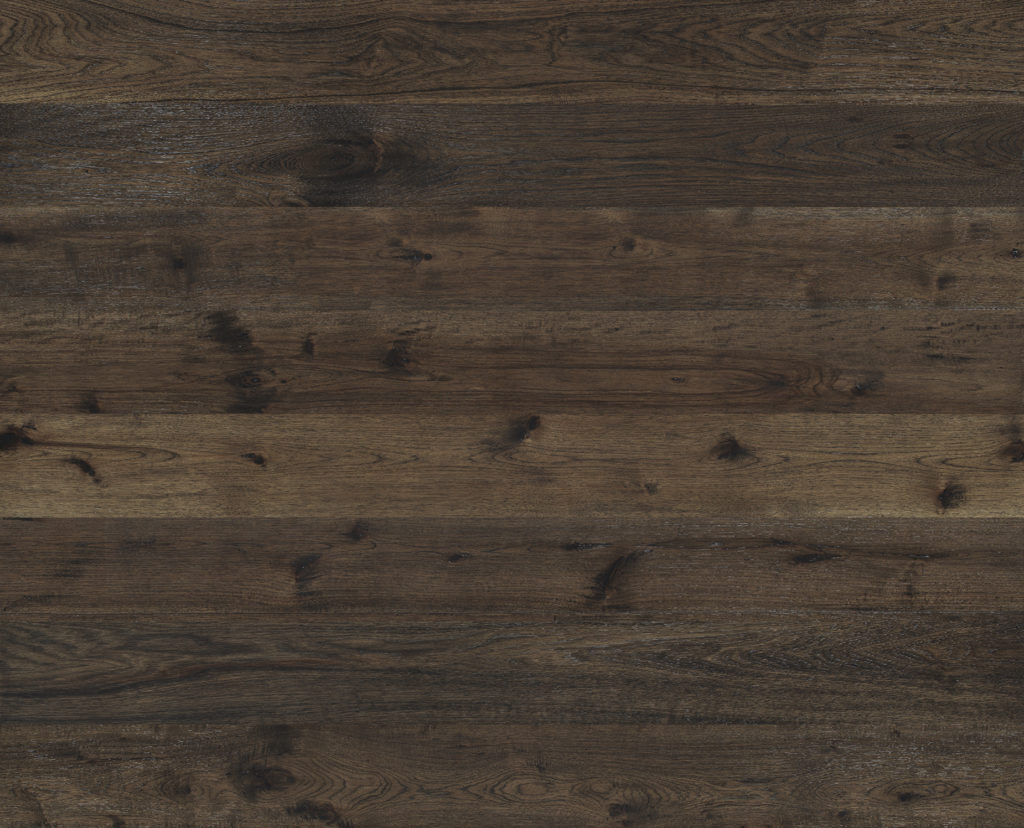
Solid Hardwood Flooring Construction
As you might imagine, solid hardwood flooring is constructed of (no surprise) one big piece of solid wood throughout.
It usually comes in strips between 1½ and 2½ inches wide, or planks between 4 and 8 inches wide. Strips and planks are generally ¾ of an inch thick and can come prefinished or unfinished, depending on your preference.
These days, prefinished hardwood flooring is the norm—but if you want to finish it on-site, you won’t have any problems doing that either.
Solid Hardwood Flooring Installation
Because it’s natural wood throughout, solid wood flooring generally needs to be glued nailed to a subfloor. And what is subflooring? It’s the rough surface underneath your finished floor. Most of the time, it’s made of plywood or concrete.
Because it needs to be glued or nailed, you’re almost certainly going to want to hire a professional to put it in (trust us, this is not the place to cut costs and hire some guy from Home Depot).
But whatever you do, make sure to leave your flooring in its intended room for at least a few days before installation to acclimate; natural wood grains expand and shrink based on humidity and temperature.
Advantages of Solid Hardwood Flooring
It’s beautiful and feels great underfoot, duh.
Ok, ok, so there are actually lots of other advantages to a solid wood floor. First and foremost, it’s extremely long-lasting. Because it’s made of thick planks, a solid wood floor can be sanded and refinished over and over again for decades.
Solid wood is versatile; there are dozens of hardwood species (types of trees) to choose from, each with its own look, color, and texture. The same goes for finishes. Even the way a plank is cut can reveal different elements of its beauty. Here’s a quick guide to some of the most popular wood flooring options:
Wood Flooring Types / Species
- Oak: The most popular type of wood flooring in the U.S., Oak is known for its warmth, character, and variation. Red Oak, White Oak, domestic, imported—you’ve got options.
- Maple: Maple is another popular domestic hardwood. It’s much lighter and can be a bit more difficult to stain than oak, but it’s a harder wood with a great natural look.
- Walnut: Rich and dark, walnut is known for its chocolate-colored grain and luxurious appearance.
- Hickory: Varied, complex, and hard, hickory is a great option if you want to really showcase your floor’s intricate detail.
- Bamboo: With its totally unique look, the bamboo flooring is both eco-friendly and one of the most durable wood flooring options around.
- Cork: Technically speaking, cork flooring is actually a composite flooring made of bark—but it’s pressed into planks and installed just like other solid hardwoods.
This is, of course, just a tiny cross-section of your endless solid wood flooring types (and we haven’t even talked about different cuts or finishes yet). If you want some help finding the best wood flooring for you, use this flooring stores near me search to find a local floor retailer in your area.
Disadvantages of Solid Hardwood Flooring
While it looks and feels great, solid wood is a natural material—meaning it’s susceptible to temperature, humidity, and moisture. Water can make it swell. It can be stained, warped, and scuffed relatively easily (depending on the species and finish, of course).
With proper care, your wood floor can last a lifetime; without it, you’ll find yourself looking for a new floor quicker than you thought. All to say, solid wood floors take a bit more maintenance than other flooring options, and you need to be careful where you install them.
Best Uses for Solid Hardwood Floors
Solid wood floors are a great option for living rooms, dining rooms, bedrooms, hallways, etc.—anywhere you want a beautiful look and a great feel.
Where to Avoid Installing a Solid Wood Floor
Basically, you should avoid putting solid wood floors anywhere they’ll be exposed to:
- Water, humidity, or moisture (like a kitchen or bathroom).
- Rising damp (like a basement or other below-ground-level room—or any room with a concrete subfloor).
- Dramatic shifts in temperature (like a 3-season room or above an underfloor heating system).
- Intense activity (like a child’s room or somewhere dogs play, for instance).
Solid Wood Flooring Cost
According to the Washington Post, solid wood flooring costs $5–$10 per square foot, on average (including professional installation). That said, exotic (aka imported) or luxury woods can cost upward of $15 per square foot.
Best Brands of 2024
Engineered Hardwood Flooring
Engineered wood flooring is a great option if you want the look and texture of solid wood—with a bit more versatility and a little less maintenance.
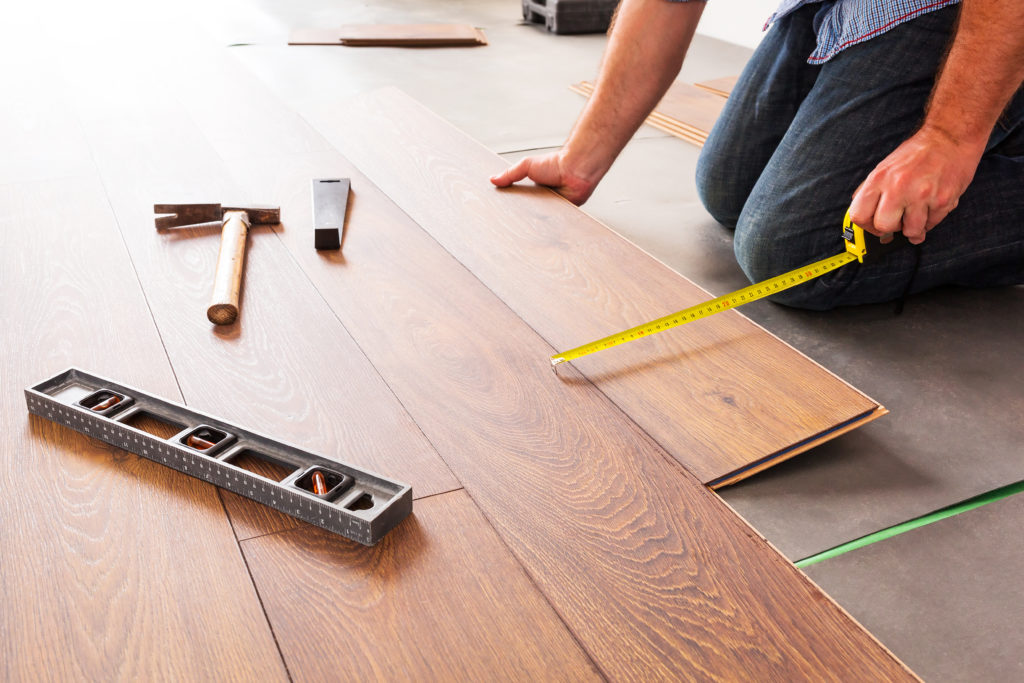
Engineered Wood Flooring Construction
What is engineered hardwood made of? Well, it’s essentially two layers: a thin sheet of solid wood (called a veneer) on top, and a thicker core of high-density fiberboard or plywood below.
Engineered wood can come in strips or planks up to 12 inches wide, and it’s generally ⅜ to ½ inch thick.
Engineered Wood Flooring Installation
Engineered wood can be installed in a number of ways. You can glue or nail it to a subfloor, or install it as a floating floor using click-together flooring planks. The latter is a great DIY project if you have the time and skill, but a professional installer can usually do the job more quickly (and efficiently). But hey, your call. We won’t judge.
Advantages of Engineered Wood Flooring
There are tons of advantages to engineered wood flooring, especially in comparison to solid wood. It has the look, feel, and versatility of solid wood—since the top of it is solid wood.
And while it isn’t waterproof, engineered wood flooring is much more resistant to warping, meaning it can go where hardwood can’t. Looking for wide plank wood flooring? You’re probably going to need an engineered product, since wider solid planks are prone to warping.
Fun fact: you can even refinish engineered wood! Well, most of the time. Read on for more info on that. Oh, and since it’s mostly made of wood byproducts, it’s more environmentally friendly than solid wood too. #EarthWarriors.
Disadvantages of Engineered Wood Flooring
And that means you don’t have to worry bout the cost to refinish hardwood flooring, either!
That said, engineered hardwood is susceptible to the same types of surface scratches and gouges that solid wood flooring is. At surface level, they’re the same types of flooring! So again the best choice for you depends on a number of elements.
Best Uses for Engineered Wood Flooring
Like we said, engineered wood flooring is much less susceptible to warping than solid hardwood flooring is. That means humidity, temperature, and moisture aren’t going to affect it nearly as much.
Translation: put it wherever you can’t put solid wood (as long as it’s not going to get super wet). Basements? Check. Go for it. Over a concrete subfloor? Why not. Above an underfloor heating system? Do it. When it comes to choosing between wood flooring types, it’s definitely the more durable option.
Engineered Wood Flooring Cost
The cost to install engineered hardwood floors is about the same as the cost to install solid wood floors when it comes to domestic species.
That said, if you’ve got your heart set on some sort of exotic wood flooring and don’t want to shell out the big bucks, engineered hardwood can be a great alternative. Because it uses less of that expensive solid wood, it won’t run you nearly as much.
Types of Flooring Part 2: Resilient
Resilient products represent the fastest-growing segment in the flooring world. Why? They’re durable, they’re relatively inexpensive, and modern manufacturing methods have made them almost indistinguishable from traditional types of flooring.
Some manufacturers label their resilient products hardwood floor alternatives or faux wood flooring. And while resilient products (laminate, vinyl, etc.) do mimic wood, they can also mimic… well, just about anything else.
Laminate Flooring
What is laminate flooring? Think of it as a more durable alternative to engineered hardwood—but with a photo layer instead of solid wood veneer. Confused? Don’t be. Here’s what you need to know.
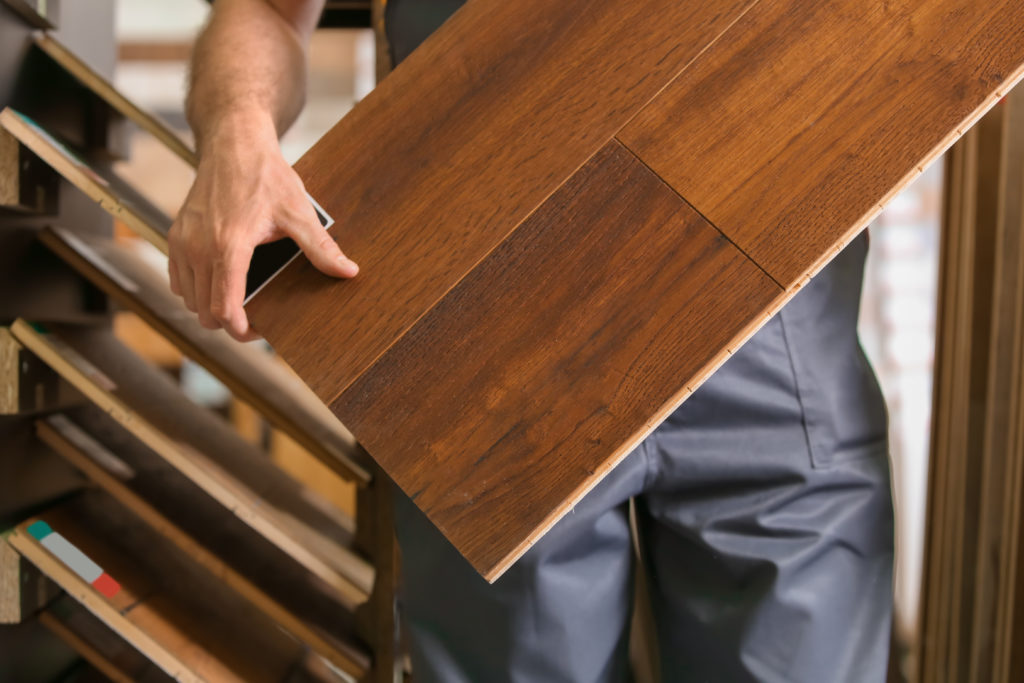
Laminate Flooring Construction
Laminate flooring is made up of three (sometimes four) layers. Starting from the bottom, they are:
- Base Layer/Core: A rigid, high-density fiberboard (very similar to the core of engineered wood).
- Image Layer: A photorealistic image of wood, stone, tile, etc.—whatever the laminate flooring is imitating. Wood laminate, for instance, is printed with an image of wood grain.
- Wear Layer: A transparent plasticate that guards against both fading and wear.
Some laminate flooring has a fourth layer below the base, often for soundproofing or comfort. Really, every type of flooring has endless versions and gimmicks devised by manufacturers to set them apart. The only way to really know what’s best for you is to talk to an expert.
Laminate Flooring Installation
Laminate is generally installed as a floating floor, meaning it’s only attached to itself (and not the subfloor). It usually requires a soft underlayment (foam, for example), and can be glued together or clicked into place—it all depends what kind of laminate you get.
Again, every manufacturer has a million types of flooring with a million gimmicks.
Advantages of Laminate Flooring
In a word: durability. The wear layer of laminate flooring makes it super, super durable. Kids? Dogs? Heavy furniture? A passion for knife throwing? Whatever you’ve got going on, laminate is a great way to avoid scratches and gouges in your floor.
Plus, its wear layer makes it easy to clean and UV resistant (so it won’t fade in the sun the way solid wood sometimes does). Oh, and it’s usually a lot less expensive than wood, too. Even the best laminate flooring brands are head-over-heels cheaper than wood—check out this comparison of engineered hardwood vs. laminate to see what we mean.
Disadvantages of Laminate Flooring
Like engineered wood, laminate flooring isn’t horribly susceptible to humidity, moisture, or temperature—but it’s not waterproof and will swell if water gets into the base layer.
Lower-end laminate floors are sometimes artificial-looking, and though laminate is some of the most scratch-resistant flooring on the market, some types have been known to chip. And while its super-hard top makes it durable, it also feels plastic-y underfoot and gets slippery when wet.
Plus, you can’t refinish or repair it.
Best Uses for Laminate Flooring
Laminate flooring is a solid flooring option anywhere it won’t get wet. Its scratch resistance makes it one of the best flooring options for high-traffic areas (like hallways) or homes with kids or dogs.
There are some waterproof laminate options out there—Mohawk’s RevWood, for instance—but they’re significantly more expensive than almost any other laminate floors. In fact, some manufacturers even (incorrectly) market them as water-resistant wood flooring (or even waterproof hardwood flooring) to account for the price difference!
Laminate Flooring Cost
Laminate flooring can cost anywhere from $1 per foot to $10 per foot (though it’s generally in the $1.50 to $3.50/sq. ft. range). It all depends on the type and quality you want. Installation usually ads at least a few dollars to the cost per square foot, as always. Like grandpa always says, there’s no free lunches.
Vinyl Plank Flooring (LVP) / Vinyl Tile Flooring (LVT)
Viny plank flooring, LVP, LVT, luxury vinyl tile… call it whatever you want, it’s essentially the same product: a durable, synthetic flooring material that can mimic the look and feel of just about anything.
But since it’s most commonly referred to as “vinyl plank flooring” or “vinyl tile flooring”, that’s what we’re going to call it from here on out.
What’s the Difference Between Vinyl Plank Flooring, Vinyl Tile Flooring, LVP, and LVT?
As we said, they’re essentially the same product. LVP stands for luxury vinyl plank. The “luxury” is there to differentiate it from older types of vinyl flooring, which we’ll discuss further down.
LVT stands for luxury vinyl tile, which is, predictably, the exact same thing—but in the shape and look of tiles rather than wood planks. It’s not rocket science.
Why all the different names? Because every manufacturer wants to differentiate their products and make them sound special.
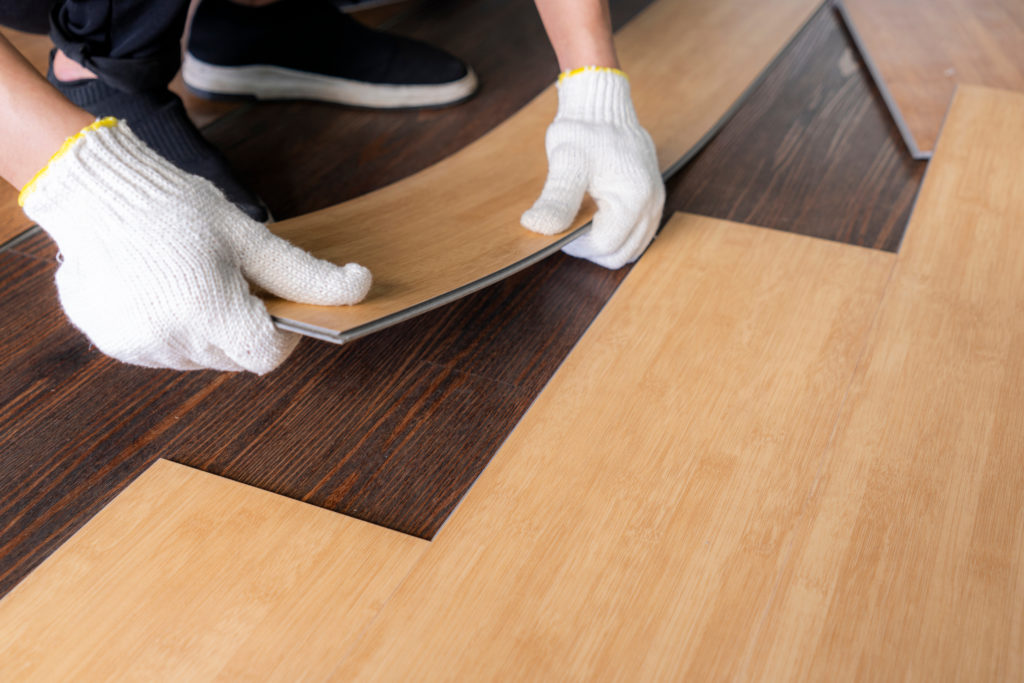
Vinyl Plank / Vinyl Tile Flooring Construction
Vinyl plank flooring is primarily made of PVC (plastic). But this isn’t your grandma’s PVC flooring. It’s a space-age surface that offers perhaps the best value of any of the types of flooring on this list.
Like laminate, vinyl plank contains multiple layers. Starting from the bottom, they are:
- Base Layer/Core: Made of vinyl, the core can range from rigid to flexible, depending on the product.
- Design Layer: Also made of vinyl, the design layer ranges mimics the look (and texture) of anything from wood to metal to stone.
- Wear Layer: A transparent layer to guard against (you guessed it) wear.
Many of the best vinyl plank flooring brands offer some sort of backing underneath the base layer, but again, it depends on the product. Sometimes they’re designed to make the tile softer underfoot, sometimes to make the floor more durable, etc. etc. There are a million variations.
One more important note: you can find both flexible core and rigid core luxury vinyl flooring on the market. Rigid core LVP is also known as “EVP flooring“, and it’s by far the more comfortable and durable option.
And if you go the rigid core route (which we would recommend), the best types of flooring for you are either going to be WPC flooring (which has a wood-polymer composite core for increased comfort) or SPC flooring (which has a stone-polymer composite for increased durability). Plain ol’ rigid-core vinyl plank isn’t much of an upgrade over flexible vinyl plank.
Vinyl Plank / Vinyl Tile Flooring Installation
The possibilities are endless, friend. You can find glue down vinyl plank flooring, click-lock vinyl plank that installs as a floating floor, even loose lay vinyl plank flooring that relies on friction and weight to hold it in place. Some types even have peel-and-stick backing!
Advantages of Vinyl Plank Flooring / Vinyl Tile Flooring
There’s a reason everyone’s jumping on the LVP/LVT train—it’s inexpensive, it’s comfortable underfoot, it’s insanely durable, it can mimic the look and texture of just about any material, and (maybe best of all) it’s an entirely waterproof vinyl flooring option.
Put it in your basement. Throw it in that mudroom. Tile a bathroom with it. Heck, make a freakin’ deck out of it. The world is your vinyl oyster, baby.
PS: Vinyl plank is so durable, some manufacturers even offer lifetime warranties for it.
Disadvantages of Vinyl Plank Flooring / Vinyl Tile Flooring
It’s plastic, which means it’s not particularly environmentally-friendly flooring. All plastic products can contain VOCs, which can be hazardous to your health—meaning you’re going to want to look specifically for low-VOC vinyl flooring brands like Proximity Mills.
And if you’re purchasing a less-expensive product, it might not look as realistic as you want it to.
Plus, if you’re going with a more flexible LVT/LVP option, you’re going to need to make sure you’re installing over a good, smooth subfloor—otherwise, any irregularities are going to show and you might get a hollow, echoey sound when you walk on it.
Best Uses for Vinyl Plank Flooring / Vinyl Tile Flooring
Like we said, LVT/LVP is waterproof—you can put the stuff anywhere. That said, you’d be making a mistake if you thought of it as just a “utility floor”.
High-quality laminates do an amazing job of imitating hardwood, tile, and stone, and lots of them are absolutely gorgeous. Put it in a living room or bedroom!
Looking for outdoor flooring? You can even find specialty outdoor vinyl flooring options to get whatever look you want.
Vinyl Plank / Vinyl Tile Flooring Cost
Vinyl plank floors and vinyl tile floors are definitely a budget-friendly option. They usually run between $1 and $5 per square foot, before installation.
And remember: LVP is easier to install than hardwood—meaning the cost to install vinyl plank flooring is cheaper, too.
Are Vinyl Tiles the Same as Linoleum Tiles?
While the terms are often used interchangeably, vinyl and linoleum are actually two different materials. Vinyl is 100% synthetic. Linoleum, on the other hand, is a mixture of fillers and binders like cork dust, pine rosin, and solidified linseed oil. It fell out of fashion a few decades ago, but it’s recently been making a comeback—mainly because it’s way more environmentally friendly than the PVC that vinyl is made from.
If you’re interested, check out our comparison guide to linoleum vs. laminate vs. vinyl.
Vinyl Sheet Flooring
Ever been in a kitchen or bathroom from… well, from the second half of the 20th century? Then you’ve walked on vinyl sheet flooring. In fact, thinking about sliding around on it in your socks is probably bringing up some major nostalgia right about now.
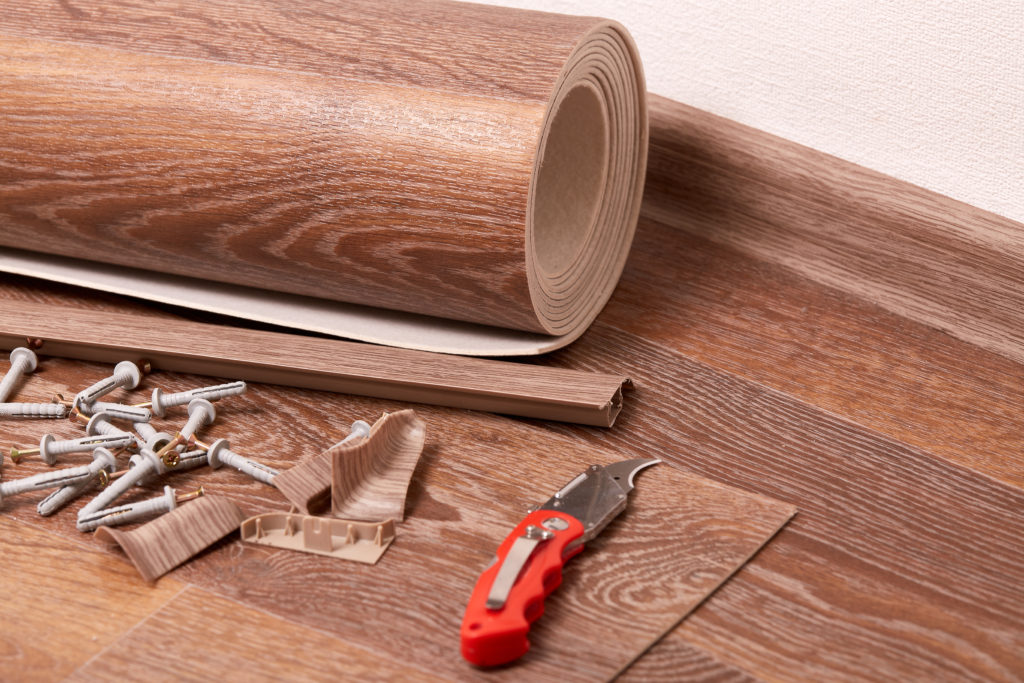
Vinyl Sheet Flooring Construction
Vinyl sheet flooring is exactly what it sounds like: a single layer of vinyl laid out in a sheet. It’s an extremely flexible material and comes in an endless variety of patterns and textures. Some products have backings, some don’t—it depends on the manufacturer.
Vinyl Sheet Flooring Installation
Vinyl sheet flooring usually comes in 6- or 12-foot rolls, which are then cut to size. Depending on the product you choose, it can be glued down or peeled-and-stuck.
Advantages of Vinyl Sheet Flooring
Because it’s plastic and installed as a single layer, vinyl sheets are a totally waterproof type of flooring. They come in literally thousands of patterns and textures, so there’s basically something for everyone. Plus, they’re ridiculously durable—there’s a reason so many houses still have them. If it ain’t broke, don’t fix it.
Disadvantages of Vinyl Sheet Flooring
As a PVC product, vinyl sheeting isn’t super eco-friendly—and if you don’t install it properly, you’re going to get some pretty monumental warping.
Best Uses for Vinyl Sheet Flooring
Laundry rooms, kitchens, and bathrooms are the most common places to put sheet vinyl floors, but it makes a great flooring for basements as well.
Vinyl Sheet Flooring Cost
Vinyl sheet is comparable to low-cost vinyl plank and vinyl tile. That said, you really need to have a good installer put it in. If water gets underneath the sheet, it’ll bubble like crazy.
Types of Flooring Part 3: Tile
Tile is one of the oldest types of flooring there is—and one of the most interesting, too.
Tile Flooring
You might think you know all there is to know about tile, but believe us—there’s a lot of exciting stuff going on in the world of tile flooring. Seriously! Stop laughing.
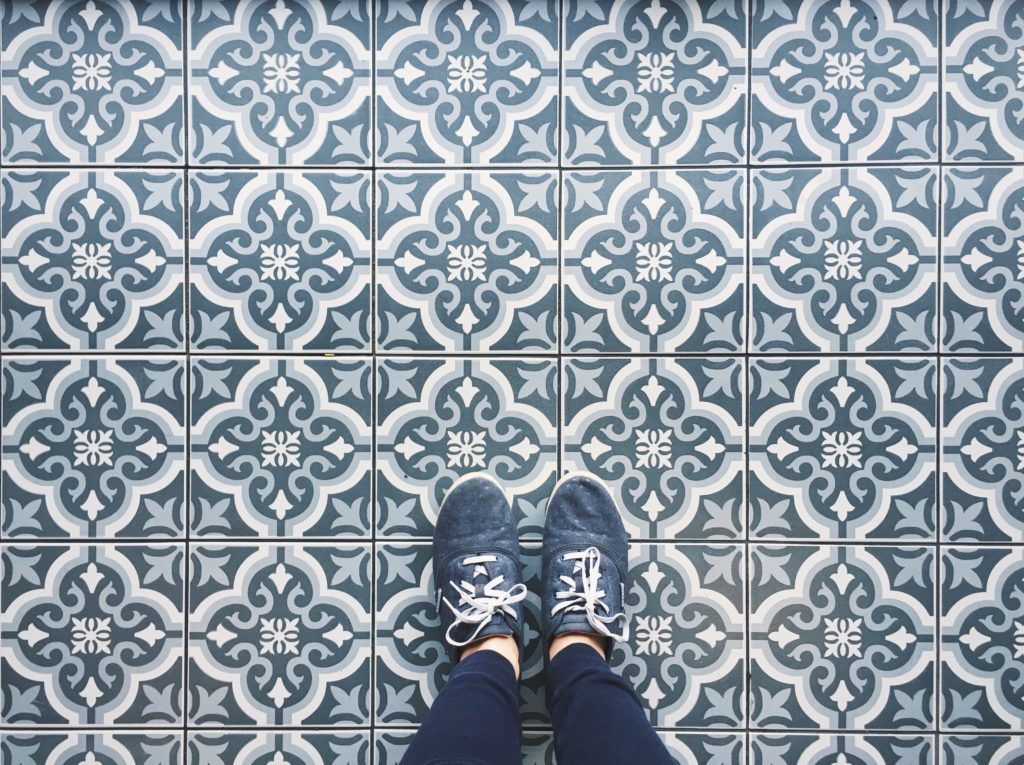
Tile Flooring Construction
There are quite a few types of tile for flooring—the most common being stone, ceramic, porcelain, and cement (ok, and linoleum, but that’s not particularly common in homes anymore). Here’s what you need to know:
- Stone Tile Flooring: Types of stone flooring tile include marble, granite, and sandstone (among literally dozens of others). Each type of stone has different properties, applications, and uses.
- Ceramic Tile Flooring: Made of baked clay, ceramic tile is extremely popular for its beauty and natural feel. Saltillo is a gorgeous example of ceramic tile.
- Porcelain Tile Flooring: Though it’s a type of ceramic, porcelain is made from a more refined clay and baked at a higher temperature than common ceramic. This makes it less water-absorbent and, in some cases, more crack-resistant. But of course, it also makes it more expensive.
- Cement Tile Flooring: Cement tiles are quite popular in Europe, and for good reason. They’re gorgeous! Cement tiles cure at room temperature, making them a bit more porous (so you have to seal them), but they come in amazing patterns and can even be refinished.
On top of the differences in material, both porcelain and ceramic tiles can come either glazed or unglazed.
- Unglazed Tiles are generally a bit rougher, but they’re the same color all the way through. That means they’re more rustic, slip-resistant, and if they crack or chip, it’s less noticeable.
- Glazed Tiles have an extra layer (of glaze, duh) and they’re probably what you think of when you picture beautifully-patterned tile floors. Because they’re glazed, chips and cracks are a little more apparent—but they don’t stain or absorb water nearly as easily.
Wood Look Ceramic Tile
Wood-look tile is one of the most popular flooring products on the market today. Why? It does an incredible job of mimicking wood grain (seriously, it’s really hard to tell them apart) while offering the same durability and benefits as porcelain or ceramic tile. That means you can put it in laundry rooms, bathrooms, kitchens… anywhere you wouldn’t put a wood product. Best of all worlds, basically.
Tile Flooring Installation
You can lay and grout tile flooring yourself, but it’s a time-consuming process and not the easiest thing in the world to do. Our advice: find a flooring store in your area and have someone who knows what they’re doing take care of it.
Advantages of Tile Flooring
It depends on the material, of course, but tile floors are absolutely timeless. From porcelain tile patterns to granite-tiled bathrooms, you really can’t go wrong in the looks department. Tile is always a great option anywhere you need a waterproof floor, and it’s a solid choice if you have an underfloor heating system. It’s easy to clean, and ceramic floors require very little day-to-day maintenance.
Disadvantages of Tile Flooring
Tile is brittle, so it can crack or chip (porcelain especially). Some types of stone floors, like marble, are very absorbent and prone to staining. Most of all, though, tile takes needs to be taken care of. You need to re-grout it every few years, and stone floors need to be resealed or they’ll start to crack.
Best Uses for Tile Flooring
Like we said, tile can go anywhere. Our advice? Avoid putting porcelain tile floors in high-traffic areas, since they’re more prone to chipping. Use unglazed tiles in your bathroom to avoid slipping. But really, there is no bad use of tile flooring. And if you want a less-slippery tile, make sure to look up its Coefficient of Friction (CoF) rating!
Tile Flooring Cost
Tile flooring costs can vary wildly depending on the material you choose. Inexpensive tiles can cost as little as $0.50 per square foot; luxury tiles can cost over $80 for the same. Installation prices are also dependent on who you buy your flooring from and the intricacy of the pattern you’re going for.
Types of Flooring Part 4: Soft Surfaces
“Soft surface” is basically a catch-all term for carpet and carpet-adjacent products. And these days, with the number of advances in the carpet industry… well, there’s a lot to learn about. From low-VOC carpets to stain-proof berber rugs, there are tons of products to choose from.
Carpet Tiles
For the last couple of decades, carpet has been the proverbial fanny pack of the flooring world: out of style and largely replaced. But like the fanny pack, it’s been making a huge comeback as of late (thanks, Millennials)—in the form of versatile, self-adhesive carpet tiles.
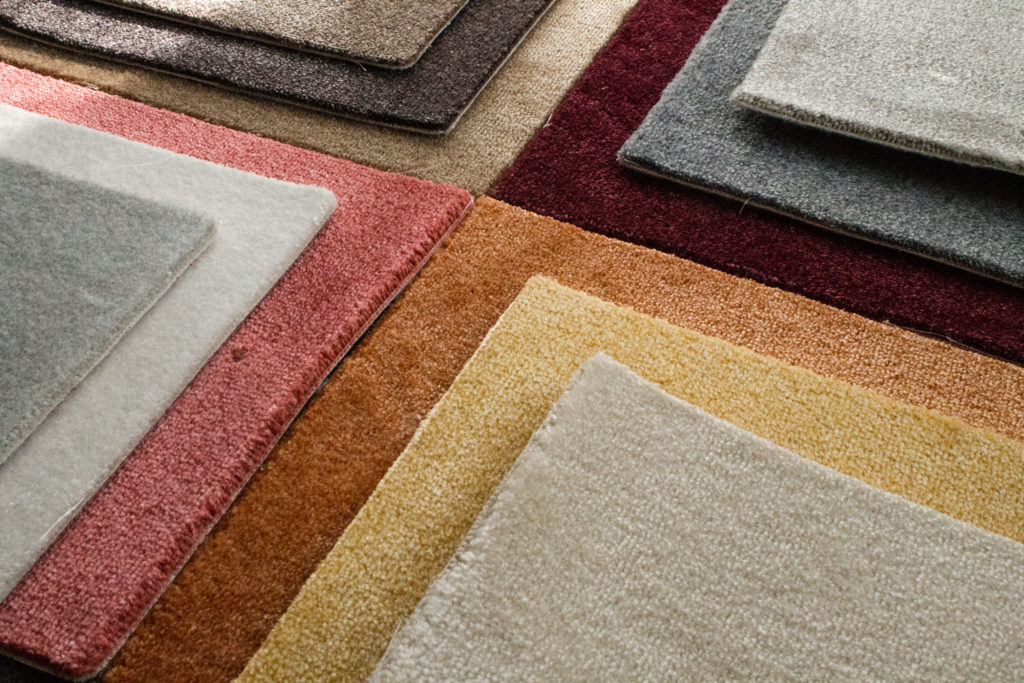
Carpet Tile Construction
Carpet tiles are square sections of carpet, usually between 16 and 24 inches long. Like most carpet, they can come in an endless variety of textures, materials, and designs. While some carpet tiles need to be glued down, many come with self-adhesive backing.
High-quality carpet tiles, in fact, can often be installed over existing finished surfaces and reused.
Carpet Tile Installation
If you’re going with self-adhesive peel-and-stick carpet tiles (and you should) you can install these so-called “carpet squares” with almost zero effort. In fact, the question how do I install carpet tiles? can basically be summed up as “make sure the surface you’re putting them on is clean; then peel, stick, and you’re good to go”. It’s literally that simple.
Like we said, peel and stick carpet tiles can be installed over existing surfaces and reused. So if you mess up on the first try, it’s really not the end of the world.
Advantages of Carpet Tiles
Modular carpet tiles are reusable, they’re easy to install, they’re inexpensive—what’s not to like? In all seriousness, though, carpet tiles are a great option if you want to get creative with your space. You can carpet an entire room with them, use them for hard-to-cover spots, or even mix and match different styles to create patterns and effects. Versatility: it’s the wave of the future.
Disadvantages of Carpet Tiles
If you’re using tiles to carpet an entire floor, you need to be precise. Otherwise, you might end up having visible seams between the tiles. Additionally, if you don’t line them up properly, you’re going to get wonky, jarring edges.
Best Uses for Carpet Tiles
Seriously, anything. Use them to carpet your office; use them to create an area rug; use them as stair runners; use them to make your patio more comfortable; use them for whatever!
Carpet Tile Cost
Modular peel-and-stick carpet tiles generally cost between $3 and $5 per square foot, and since there’s no installation cost to speak of, they’re definitely one of the more budget-friendly flooring options. Plus, you can buy carpet tiles at Home Depot, on Amazon… anywhere, really.
Broadloom (Wall-to-Wall) Carpet
When you think of conventional carpets, you’re usually thinking of broadloom carpets—ones that are woven on a wide (or broad loom)—that cover a floor wall to wall.
While broadloom carpets are a bit of their own thing (there are endless publications dedicated to educating people all about carpet), here’s a quick rundown.
Broadloom Carpet Construction
Carpets generally come in one of three categories, or piles: cut pile, loop pile, or cut-and-loop pile.
Cut pile stands straight up from the backing, whereas loop doubles back to make—you guessed it—a loop. Pretty self-explanatory. Cut-and-loop pile is a combination of both, and usually used for making patterned carpets.

Materials for carpet fiber include nylon (the most common), wool, polyester… you name it.
Broadloom Carpet Installation
This one’s a doozy. Carpets are not easy to install. You need tons of special materials and it is not a good do-it-yourself flooring option. We could describe the intricate process of properly installing carpet, but we’d rather just let you look it up “easy carpet installation” on YouTube. Spoiler: it’s not easy.
Advantages of Broadloom Carpet
It’s cozy! Come on, it’s carpet. You know the advantages—it’s cozy, it’s soft, it’s warm, it’s slip-proof… the list goes on. When it comes to analyzing types of flooring, this one is pretty self-explanatory.
Disadvantages of Broadloom Carpet
Have you ever tried cleaning spills out of a carpet? Do you have any pets? Kids? Allergies? Do you live in a dusty area? Is your home prone to mildew? Do you like keeping your house clean?
If you answered “yes” to any of these questions, you probably know the disadvantages of broadloom carpets already. They’re hard to clean; they’re magnets for dirt, mites, and dust; they’re home to allergens and bacteria, they can mildew, etc.
Obviously, it depends on the type of carpet you buy (some new materials are mildew-resistant, for instance)—but on the whole, they’re not the easiest. There’s a reason so many people are debating carpet vs. laminate these days—and landing firmly on the laminate side.
Best Uses for Broadloom Carpet
Put carpet anywhere you want a soft, warm floor! Bedrooms, hallways, even living rooms—just not bathrooms. Please.
Broadloom Carpet Cost
Carpeting runs a huge price range depending on material and construction. The materials themselves can vary from $4–$20 or more per square foot (depending on your choices). And installation is not the cheapest, given the need for a highly trained professional. That said: if you’re wondering how to replace flooring on a budget and you want carpet, it can be done. You just need to talk to a flooring professional for help!
Conclusion
It’s time, friend. We’ve given you the lowdown on all the most popular types of flooring. Now it’s time to go straight to the source: a local retailer. Don’t fret; we won’t make you type stuff like “carpet near me” and “hardwood flooring near me” over and over into Google (it’ll just return a bunch of results for Home Depot and Lowes, anyway).
There’s an easier way: use this flooring stores near me search. It’ll show you all the flooring stores in your area, complete with their contact info, inventory, and descriptions. See? We told you we’d help you find the best flooring for you. And you thought we were kidding when we said we’d make flooring fun.
About The Author

Samuel Greenberg
October 11, 2019
Associate Director of Content Marketing at FlooringStores (and its parent company, Broadlume), Samuel is a former travel writer, English teacher, and semi-professional trivia host. When he’s not creating content, he can be found doing crosswords, drinking coffee, and petting the office dogs.
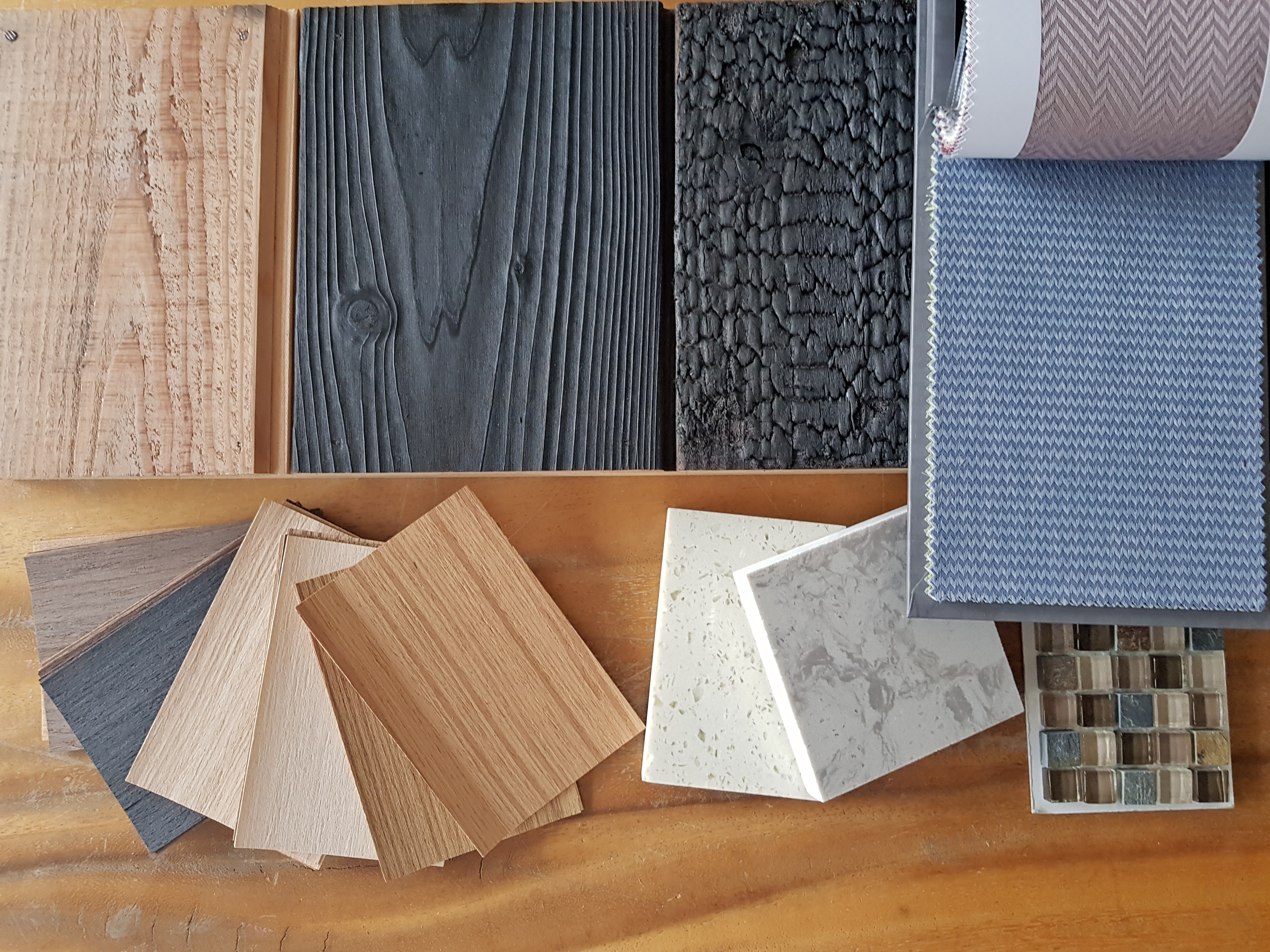
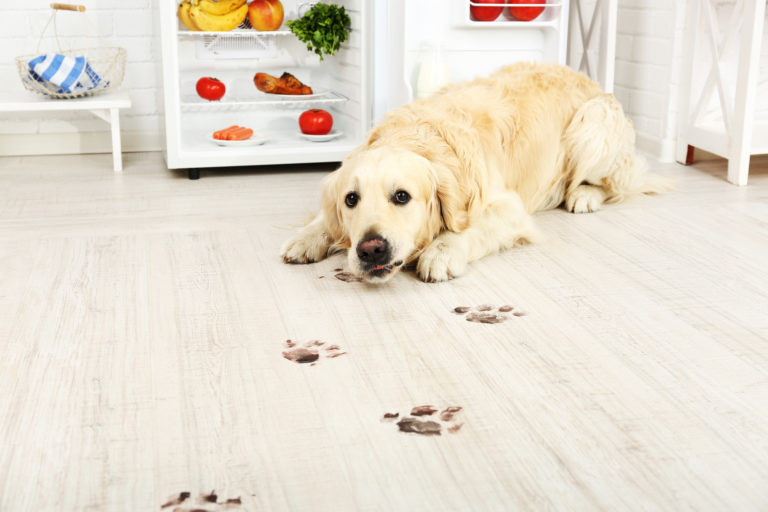

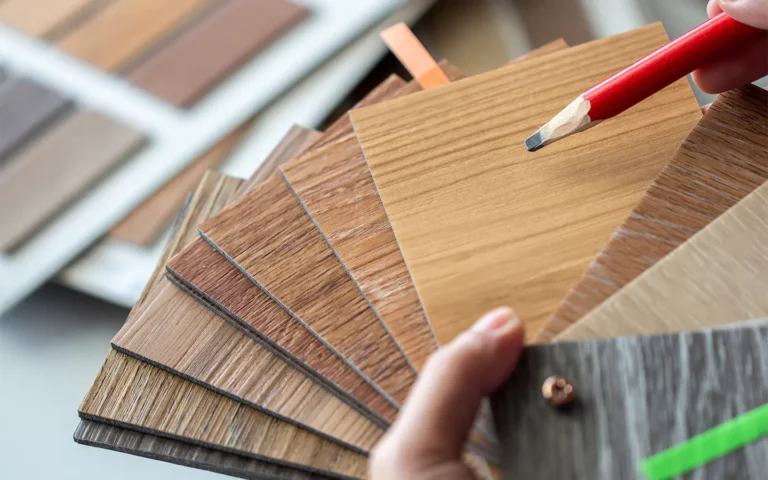

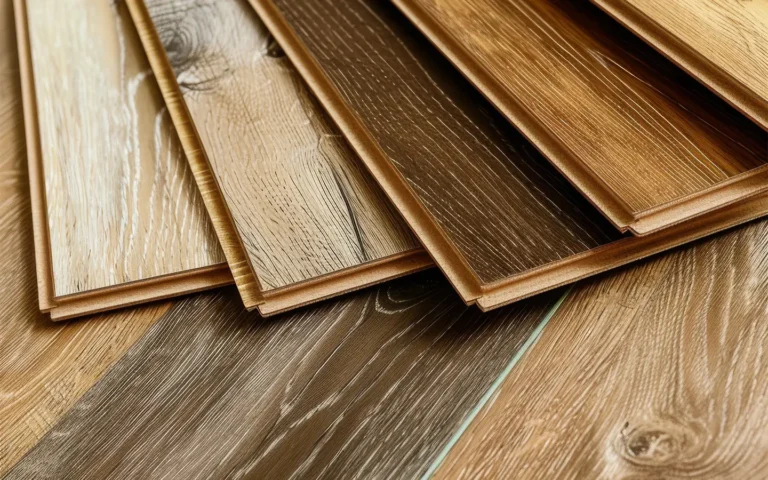
23 comments
www.granitestateepoxy.com
Choosing the right flooring can indeed be a daunting task with so many options available. However, it’s great to have resources that simplify the decision-making process and make it more enjoyable. I appreciate the breakdown of different flooring types and the top-rated brands for each category. Speaking of flooring, I recently came across epoxy garage flooring Manchester, which offers a unique and durable solution for garage floors. It’s fascinating how advancements in flooring technology have expanded into various areas, including garages. It’s worth considering for anyone looking to enhance the appearance and functionality of their garage space.
www.spinnertools.com
Very nice, indeed.
Joseph Winters
I really appreciate that you’ve included information on installation methods. It’s important to know what you’re getting into before starting a DIY project. Do you have any recommendations for someone looking to install their own flooring?
Luke Smith
It’s great that you mentioned how laminate is a great way to avoid scratches and gouges on your floor. My wife and I are planning to renovate the flooring of our house and we are now trying to pick what new type of flooring we’re going to use. There are quite a lot of options to choose from, so I’ll try to stop by a flooring dealer later.
Mickel John
Nice to visit this site. This is pure home improvement site. I read this blog about flooring. You provide the best flooring guidance.
Thanks for sharing!
kim royse
Dear Samuel,
Great and informative!! I’m hoping to get a job at a local flooring company so I am learning and excited to have found you.Your writing style is so entertaining you could make learning about State Disability fun!!!! Very simple and uncomplicated. Good Work!
KIm
Bo Arnold
Hi Kim, Bo here jumping in for Samuel.
Thanks so much for reading! We’re glad you found it informative (and entertaining—I agree, Sam makes everything sound fun).
Good luck with your local flooring company—keep checking back for new articles and let us know how it goes!
Harwood
best blog
Afton Jackson
When you stated that vinyl flooring is a completely waterproof flooring option, I thought of our upcoming basement project. We plan to turn that into a bar and adult-drinking space for the family so the kids can play video games in the other rooms without disturbing is. Since I can already expect spills and stains there, I’ll make sure I contact a vinyl flooring provider so I can get some for that room.
FlortekCo
Thanks For Sharing Your Thoughts in Your Blog. The Above Designs You Discussed Is Fabulous And It is really Helpful For my Business. We Are Also Providing Some Flooring Services Like Concrete Prep, Traffic Coating And Many More….!
Samuel Greenberg
Our pleasure—we’re impressed by the products you’re making!
Stefan Robert
I am glad to see that well explained. Anyone can easily comprehend since it’s simple & focused. Keep up the great work!
Samuel Greenberg
Thanks very much, Stefan—so pleased you liked the article!
Zachary Tomlinson
My aunt is looking for ideas on how to make her home’s interior to look natural. Your suggestion of adding hardwood flooring that can be made of different species is very intriguing. I’ll be sure to relay this to her and suggest that she contact a flooring service expert for their advice.
Samuel Greenberg
Hi Zachary,
Thanks so much for reading and so glad our advice was helpful! Another great option is to use different species of wood to create beautiful and unique wood floor patterns. Let us know what you think and thanks again for reading!
Erika Brady
Thanks for mentioning the durability, warmth, elegance, and beauty that hardwood flooring offers. If someone is interested in this option, it would probably be a good idea to research installation services online to view their gallery. This way, you can view examples of the type of hardwood flooring they offer to determine if it fits the style of your home and your personal preferences in order to create a beautiful space that you’ll love to live in.
Samuel Greenberg
Hi Erika,
Thank you so much for reading, and I can’t tell you how much we appreciate your comment! We feel the exact same way about buying hardwood, especially now that it’s so easy to find high-quality images on installers’ sites. Also: this might “age” me a little bit, but I love Sonoma County and used to go to Sonoma County Crushers games when I was young! Keep up the amazing work at Floorcoverings of Marin County and thanks again for reading!
–Samuel
Access Doors and Panels
Excellent explanation. Anyone can easily comprehend since it’s simple & focused. Keep up the great work!
Samuel Greenberg
Thanks so much for saying, and so glad you enjoyed reading! More than anything, we want flooring to be accessible to everyone—not just people in the industry. Can’t thank you enough for your kind words!
ceramic tile cutter
I couldn’t refrain from commenting. Exceptionally well written!
Samuel Greenberg
Thanks so much for saying, and thanks so much for reading!!
Harold
Engineered wood flooring is a reasonable compromise between quality, reliability, and affordability, while the appearance is beyond praise. Although other types of coverage in recent years have taken a big step forward (in terms of reliability and availability). The choice of materials available is huge, and it is easy for an inexperienced person to get confused in all the technical details and marketing tricks. In such cases, call professionals!
Regards,
Harold
Samuel Greenberg
Hi Harold,
We couldn’t agree with you more! Engineered wood is an excellent compromise (and can be absolutely stunning to boot). More importantly, we think working with a flooring professional is the only way to ensure an amazing outcome when you purchase new floors. There are so many marketing tricks, different names, etc. when it comes to flooring that you simply need to have a knowledgeable local retailer’s help. They’re the real MVPs!
Thanks so much for contributing,
Samuel